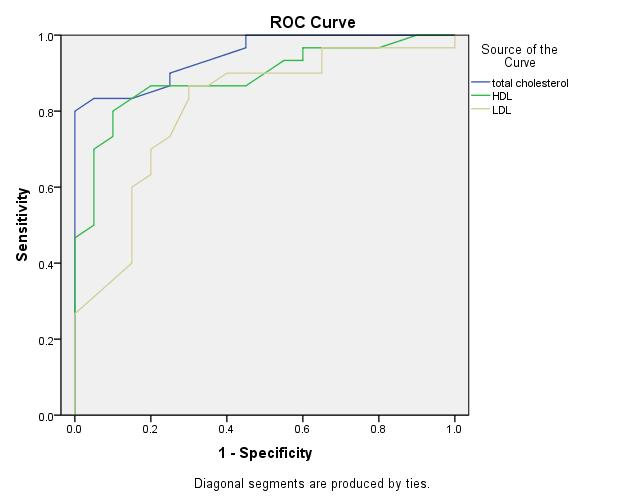Studies of Lipid Profiles Among Infants with Respiratory Distress Syndrome
Clinical Medicine And Health Research Journal,
Vol. 4 No. 6 (2024),
1 November 2024
,
Page 1024-1030
https://doi.org/10.18535/cmhrj.v4i6.409
Abstract
Background: Respiratory distress syndrome (RDS) is known as hyaline membrane disease (HMD). It is the major cause of neonatal respiratory distress, especially in preterm infants Infants with RDS present with tachapnea, cyanosis, grunting, subcostal and intercostal retractions and nasal flaring. Oliguria with mild generalized edema may be present. Oxygen requirement may increase rapidly and is typically higher than that seen in infant with transient tachapnea of the newborn (TTN).
Objective: to evaluate the relationship between the maternal and cord blood lipid profiles in preterm babies with respiratory distress syndrome.
Methods: This is a case control study which was conducted on 50 preterm neonates admitted to the neonatal intensive care unit of Shebin El-Kom teaching hospital between January 2020 and October 2021.
Results: the mean of total cholesterol was significantly higher in infants whose mothers had received antenatal steroid for lung maturity than those whose mothers had not (P<0.05). But there was no significant difference in the mean of levels of TG, HDL-cholesterol, LDL-cholesterol and VLDL cholesterol between both groups. Also, There is a positive correlation between weight gain during pregnancy and neonatal cord blood levels of (Total cholesterol, TG, HDL-C, LDL-C and VLDL-C), There is a positive correlation between maternal blood levels of (total cholesterol, TG, LDL-C and VLDL-C) and their neonatal cord blood levels of (total cholesterol, TG, HDL-C, LDL-C and VLDL-C), There is a positive correlation between the maternal blood level of HDL-C and their neonatal cord blood levels of (total cholesterol and HDL-C).also, the cutoff values of cord blood (total Cholesterol, HDL-C, and LDL-C) below which RDS can be predicted are 80, 45.5 and 23.2 mg/dl respectively with a sensitivity of 83.3%, 86.7% and86.7% and with specificity of 95%, 80% and 70% respectively.
Conclusion: RDS is accompanied with lipid alteration in the infants and their mothers. The results of this study point to the importance of measuring maternal serum and cord blood lipid profile as a predictor for the occurrence of RDS.
- cord serum, hyaline membrane disease, respiratory distress syndrome, preterm infants.

How to Cite
Download Citation
References
- Article Viewed: 0 Total Download


